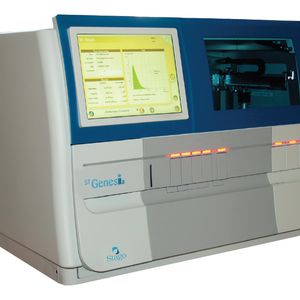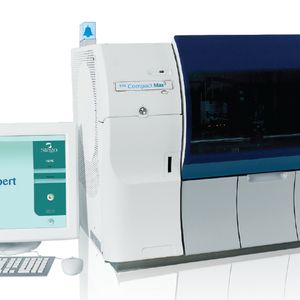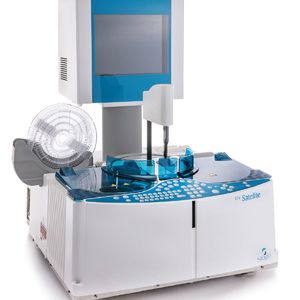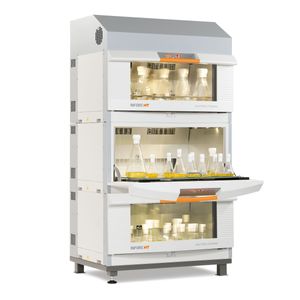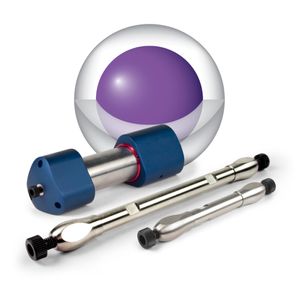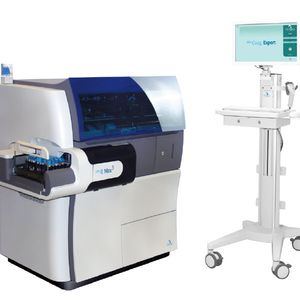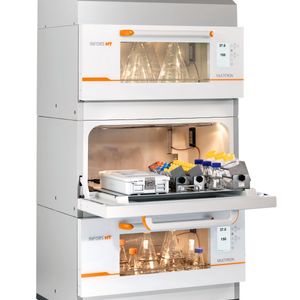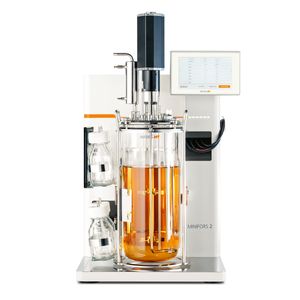WEBINARS
Our webinars allow users to learn from experts and earn continuing education credits on industry topics, progress in research, services available, and more.
Show More
-
MAR 06, 2024 | 10:30 AMC.E. CREDITSThe nervous system of social species has evolved to perceive and evaluate signals within a social context. Social information therefore must impact how the brain processes information, yet l...
-
MAR 06, 2024 | 1:00 PMC.E. CREDITSLaboratories are required to participate in proficiency testing (PT). PT is a powerful tool for laboratories to learn about their own testing performance and discover potential issues with t...
-
MAR 06, 2024 | 9:00 AMC.E. CREDITSParkinson’s disease (PD) belongs the group of synucleinopathies characterized by progressive aggregation of the neuronal protein alpha-synuclein (asyn). Diagnosis and evidence of disea...
-
MAR 06, 2024 | 7:30 AMC.E. CREDITSLearning Objectives: 1. Review the basic principle of 3D microscopy. 2. Recognize the pathophysiology of Parkinson disease. 3. Demonstrate knowledge on how alpha-synuclein aggregates spread...
-
On DemandC.E. CREDITSHow do the cognitive and physiological traits of individuals translate into real-world group dynamics? There is an empirical and theoretical gap between understanding individual-level proces...
-
On DemandC.E. CREDITSA central goal for neuroscience is to understand how our brains process information in real life, such as faces during natural social interactions. While we have gained important knowledge u...
-
On DemandC.E. CREDITSMany nonhuman primate species show sex differences in behavior, which suggests that there may also be sex differences in brain organization. In order to better understand the evolution of se...
-
On DemandC.E. CREDITSA core goal of neuroscience is to understand how the brain adaptively orchestrates movements to execute complex behaviors. Quantifying behavioral dynamics, however, has historically been pro...
-
On DemandWith the internet, society has been exposed to puzzling and exquisite animal behavior, while neuroscience has vastly concentrated on a few inbred animal models studied in trained unnatural s...
-
On DemandC.E. CREDITSStudying motor behaviors can reveal fundamental principles of the brain and mind. This presentation focuses on our work towards developing the hardware and computational tools that will allo...
-
On DemandC.E. CREDITSIndividuals with substance use disorders often show impaired sensitivity to reward value. However, it is not clear whether such impairment impacts reward-related decision making and whether...
-
On DemandC.E. CREDITSVirginia will discuss work on single-trial analysis of EEG signals during episodic memory tasks. They develop single-trial classifiers to predict whether people will remember pictures from E...
-
On DemandC.E. CREDITSTo make movement and foraging decisions in a naturalistic environment, multiple neural populations must work synergistically to produce successful actions. These decisions span multiple scal...
-
On DemandC.E. CREDITSBehaving animals continually reconcile the internal states of their neural circuits brain-wide with incoming sensory and environmental evidence to evaluate when and how to act. The brains of...
-
On DemandC.E. CREDITSThe ability to record every spike from every neuron in a behaving animal is one of the holy grails of neuroscience. Here, Alison Hanson discusses a collaborative effort aimed at coming one s...
-
On DemandC.E. CREDITSProtein misfolding and aggregation are key features observed in numerous neurodegenerative conditions, such as Alzheimer's and Parkinson's disease. The oligomers formed during the ag...
-
On DemandC.E. CREDITSOur ability to record large-scale neural and behavioral data has substantially improved in the last decade. However, the inference of quantitative dynamical models for cognition and motor co...
-
On DemandC.E. CREDITSSocial animals congregate in groups and communicate with vocalizations. To study the dynamics of natural vocal communication and their neural basis, one must characterize signals used for co...
-
On DemandC.E. CREDITSTransdisciplinary knowledge producing teams (TDKPTs) dedicate their efforts to solving wicked problems. Successful TDKPTs embody characteristics of complex adaptive systems (CAS) and exempli...
-
On DemandC.E. CREDITSMany behaviors are learned through trial and error by matching performance to internal goals, yet neural mechanisms of performance evaluation remain poorly understood. We recorded basal gang...
-
On DemandC.E. CREDITSVestibular sensation anchors our perception of the environment and is crucial for maintaining balance during locomotion. Vertebrate animals use the evolutionarily conserved vestibular system...
-
On DemandC.E. CREDITSRobots are useful tools for studying the nervous system and its control of body mechanics because they can be used to perform experiments that would be difficult to perform with an animal. F...
-
On DemandC.E. CREDITSSocial interactions are essential for the survival of social animals. Across species the medial prefrontal cortex (mPFC) has been identified as a hub of social cognition. In mouse models we...
-
On DemandC.E. CREDITSInfant motor development is measured clinically using short, subjective, observational scales. While these scales are useful, they have limitations. They provide us with a “snapshot&rd...
-
On DemandC.E. CREDITSDrug discovery programs require a robust panel of models and assays to identify and validate drug targets, support compound optimisation, and run mechanistic studies. Fully human in vitro mo...
-
On DemandC.E. CREDITSDBS for obsessive-compulsive disorder (OCD) achieves clinical benefit in 66% of treatment-resistant patients. However, there is still a lack of a fundamental understanding of the neurophysio...
-
On DemandC.E. CREDITSBrain organoids are self-assembled three-dimensional cellular aggregates with cell types and tissue architectures that resemble the embryonic human brain. As they recapitulate many key featu...








































